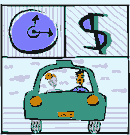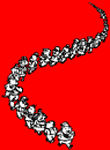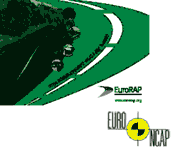
 |
![]()
Profile of Moderator and Panelists
| Moderator: | Dr. Katsutoshi Ohta |
| Panelist: | Dr. Claes Tingvall |
| Panelist: | Dr. Yoichiro Murakami |
| Panelist: | Dr. Hisatake Kato |
Abstract of Lecture and Powerpoint Slides
Lecturer: Dr. Claes Tingvall
Katsutoshi Ohta
| Address (Office): | School of Regional Development Studies, Toyo University 1-1-1 Izumino, Itakuramachi, Oora-gun,Gunma 374-0193, Japan |
| DATE OF BIRTH: | January 19, 1942 |
| NATIONALITY: | Japanese |
| SPECIALISATIONS: | Urban Transport Planning, Transport Demand Estimation Urban Planning, Urban Transport Planning and Policy for Developing Countries |
| LANGUAGES: | Japanese, English |
| EDUCATION: |
College: Department of Civil Engineering, University of Tokyo, 1960-65, B.E. 1965 Graduate School: Department of Civil Engineering, University of Tokyo, 1965-67, M.E. 1967 Graduate School: Graduate School of Arts and Sciences, Harvard University (USA) 1967-71 Ph.D. 1972 (City and Regional Planning) |
7. PROFESSIONAL EXPERIENCES
| 1969-1970 | Teaching Fellow, Graduate School of Arts and Sciences, Harvard University, USA |
| 1971-1978 | Instructor, Department of Urban Engineering, University of Tokyo |
| 1976-1977 | Research Fellow, Transport Studies Unit (St. Antony's College), Oxford University, UK |
| 1978-1991 | Associate Professor, Department of Urban Engineering, University of Tokyo |
| 1991-2003.3 | Professor, Department of' Urban Engineering, School of Engineering, University of Tokyo |
| 2003 | Professor Emeritus, University of Tokyo |
| 2003.4- | Professor, School of Regional Development Studies, Toyo University |
太田 勝敏
東洋大学国際地域学部(国際地域学科)教授 | |
| 1942年 | 生まれ |
| 1965年 | 東京大学工学部土木工学科卒業 |
| 1967年 | 東京大学工学系大学院修士課程修了 |
| 1971年 | 東京大学工学部助手 |
| 1978年 | 東京大学工学部助教授 |
| 1991年 | 東京大学工学部教授 |
| 1995年 | 東京大学大学院工学系研究科教授 |
専門は都市交通計画、交通需要予測、交通施設計画等 | |
Claes Tingvall
Born 1953 in Karlstad, Sweden
Education:クラウス・ティングヴァル
1953年スウェーデン、カールスタード生まれ
学歴Yoichiro Murakami
Graduate School Professor, and Other Distinguished Professor of Science, at International Christian University, Professor Emeritus at University of Tokyo
| 1936: | Born in Tokyo |
| 1962: | Graduated from Department of History and Philosophy of Science, College of Arts and Sciences, University of Tokyo |
| 1968: | Finished the Doctoral Course of Comparative Literature and Culture, University of Tokyo |
| 1965: | Research Associate, at the Department of Physics, Faculty of Science and Technology, Sophia University |
| 1971: | Assistant Professor, above |
| 1973: | Associate Professor, at Department of History and Philosophy of Science, College of Arts and Sciences, University of Tokyo |
| 1986: | Professor, above |
| 1989: | Professor, Research Center for Advanced Science and Technology, University of Tokyo |
| 1993: | Director, above |
| 1995: | Professor, International Christian University |
| 1997: | Professor Emeritus, Tokyo University. |
| 2002: | Graduate School Professor, International Christian University |
| Specialty: History of Science, Philosophy of Science, and Sociology of Science and Technology Publications: Kindai Kagaku o Koete < Beyond Modern Science > (Koudansha Gakujutsu Bunko), etc. | |
村上 陽一郎
国際基督教大学大学院オスマー記念科学教授
| 1936年 | 生まれ |
| 1962年 | 東京大学教養学部教養学科(科学史・科学哲学分科)卒業 |
| 1968年 | 東京大学大学院人文科学研究科比較文学・比較文化専攻博士課程修了 |
| 1965年 | 上智大学理工学部助手 |
| 1971年 | 上智大学理工学部助教授 |
| 1973年 | 東京大学教養学部助教授 |
| 1986年 | 東京大学教養学部教授 |
| 1989年 | 東京大学先端科学技術研究センター教授 |
| 1993年 | 東京大学先端科学技術研究センター長 |
| 1995年 | 国際基督教大学教授 |
| 1997年 | 東京大学名誉教授 |
| 2002年 | 国際基督教大学大学院教授 |
| 専門は科学史、科学哲学、科学技術社会学 著書は「近代科学を超えて」(講談社学術文庫)等 | |
Hisatake Kato
President of Tottori University of Environmental Studies
| 1937: | Year of birth |
| 1963: | Graduated from Department of Philosophy, Faculty of Letters at University of Tokyo |
| 1966: | Finished his master's degree in philosophy at Graduate School of Humanities and Sociology at Tokyo University |
| 1969: | Lecturer of Faculty of General Education at Yamagata University |
| 1970: | Assistant Professor for the same faculty at Yamagata University |
| 1972: | Assistant Professor for Faculty of Arts and Letters at Tohoku University |
| 1982: | Professor of Faculty of Letters at Chiba University |
| 1994: | Professor of Faculty of Letters at Kyoto University |
| 1996: | Professor for Graduate School of Letters at Kyoto University |
| 2001: | Professor Emeritus at Kyoto University |
Specialty: Ethics, Philosophy, and History of Thought.
Publications: Senso Rinri-gaku < Ethics of War > (Chikuma Shinsho), etc.
加藤 尚武
鳥取環境大学学長
| 1937年 | 生まれ |
| 1963年 | 東京大学文学部哲学科卒業 |
| 1966年 | 東京大学大学院人文科学研究科哲学専攻・修士課程修了 |
| 1969年 | 山形大学教養部講師 |
| 1970年 | 山形大学教養部助教授 |
| 1972年 | 東北大学文学部助教授 |
| 1982年 | 千葉大学文学部教授 |
| 1994年 | 京都大学文学部教授 |
| 1996年 | 京都大学大学院文学研究科教授 |
| 2001年 | 京都大学名誉教授 |
専門は倫理学、哲学、思想史
著書は「戦争倫理学」(ちくま新書)等
Claes Tingvall
Dr Med Sc, Professor
Director of Traffic Safety, Swedish National Road Administration
ABSTRACT
The road transport system is one of the most hazardous environments for the citizen. The system is in general terms an ill designed man-machine interface that does not absorb normal human behavior in a systematic way. The road transport system is characterized by a large number of subsystems, stakeholders and users that are driven by individual motives not linked together.
A vision has the advantage to be shared by many stakeholders irrespective of motives. While a systematic prioritizing of cost effective solutions normally are done on the societal or organizational level, a vision can open up for an open discussion of how a number of stakeholders can contribute based on their individual motives. A vision also has the advantage to open up for a dialogue on how things can be done in a longer perspective rather than focusing on short or medium term improvements.
A vision for a safe road transport system should be built on human values, responsibility sharing, a scientific approach to system safety and how driving mechanisms for change are generated. The issue of human values deals with ethics and the approach to trade-off between human health and the benefits of the road transport system. This seems to be the most complicated part of a vision, where the road transport system globally value mobility versus health loss.
The driving mechanisms for change has been underestimated in the road safety area. In essence, it should be natural that the main driving force is the citizen's demand and right to stay alive within the road transport system.
|
Vision for a safe road transport system Claes Tingvall, Co-authors: Why a vision?
 A problem description: The citizens misuse a well functioning road transport system with large economic losses to the society, or The road transport system is a poor man-machine system where the individual citizen is the victim Human values form a professional perspective “The responsibility for the safety of the individual will fall on the professional society - with consequences for the value of life and health.” Vision Zero
 Vision Zero is in essence: The responsibility for creating a safe road transport system falls on the professional society - not on the users  The critical issue of Vision Zero is: how shall the professional society respond to the responsibility put on it?  “Rule of Ethics” “Life and health cannot be exchanged for benefits of the road transport system”  “Rule of responsibility” “We are obliged to do whatever we can to protect human life and health”  Responsibility Chain
 “Rule of Science” “We shall only use the best possible methods and base our action on the failing human”  “Rule of Science” - cont. “The biomechanical tolerance of the human is the limiting factor for the road transport system”  “Rule of Driving Forces” “The citizen’s legitimate demand for life and health is the main driving force for change”  In order to get the citizens into the loop, all qualities of products and services should be openly declared examples NCAP for vehicles  Is Vision Zero expensive?
 Typical costs
Is a high level of safety a threat to a developing society and a rich life? or Is lack of safety in fact restricting humans to experience a challenging life? Summary
 |
![]()